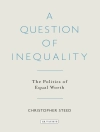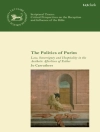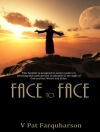Esta obra, publicada originalmente en 1936, constituye uno de los trabajos académicos más influyentes de C. S. Lewis en el campo de la literatura medieval. En ella se desarrolla un profundo estudio sobre la poesía amorosa alegórica de la Edad Media, cuyo origen se sitúa en los poemas de «amor cortés» de los trovadores del Languedoc desde el siglo XI, a través de su transformación y fin a finales del siglo XVI.
Esta poesía de los trovadores, que constituiría el primer modo de expresión del amor «romántico», supuso tal cambio respecto de la literatura precedente que, como el propio Lewis señala, «no dejó intocado rincón alguno en nuestra ética, nuestra imaginación y nuestra vida diaria, erigiendo barreras infranqueables entre nosotros y el pasado clásico o el presente oriental. Comparado con esta revolución, el Renacimiento es un simple remolino en la superficie de la literatura».
Resulta particularmente relevante dentro del presente ensayo el estudio que Lewis realiza de El libro de la rosa, obra cumbre del género dentro de la literatura tardo medieval.
The Allegory of Love
This work, originally published in 1936, constitutes one of the most influential academic works of C.S. Lewis in the field of medieval literature. It develops an in-depth study of the allegorical love poetry of the Middle Ages, whose origins lie in the 'courtly love’ poems of the Languedoc troubadours in eleventh century, through its transformation and gradual demise at the end of the sixteenth century.
This poetry of the troubadours, which would constitute the first mode of expression of «romantic» love, supposed such a change with respect to the preceding literature that, as Lewis himself points out, 'it left no corner untouched in our ethics, our imagination and our lives. daily, erecting insurmountable barriers between us and the classical past or the Eastern present. Compared with this revolution, the Renaissance is a mere whirlpool on the surface of literature.’
Lewis”s study of The Book of the Rose, the masterpiece of the genre within late medieval literature, is particularly relevant in this essay.












